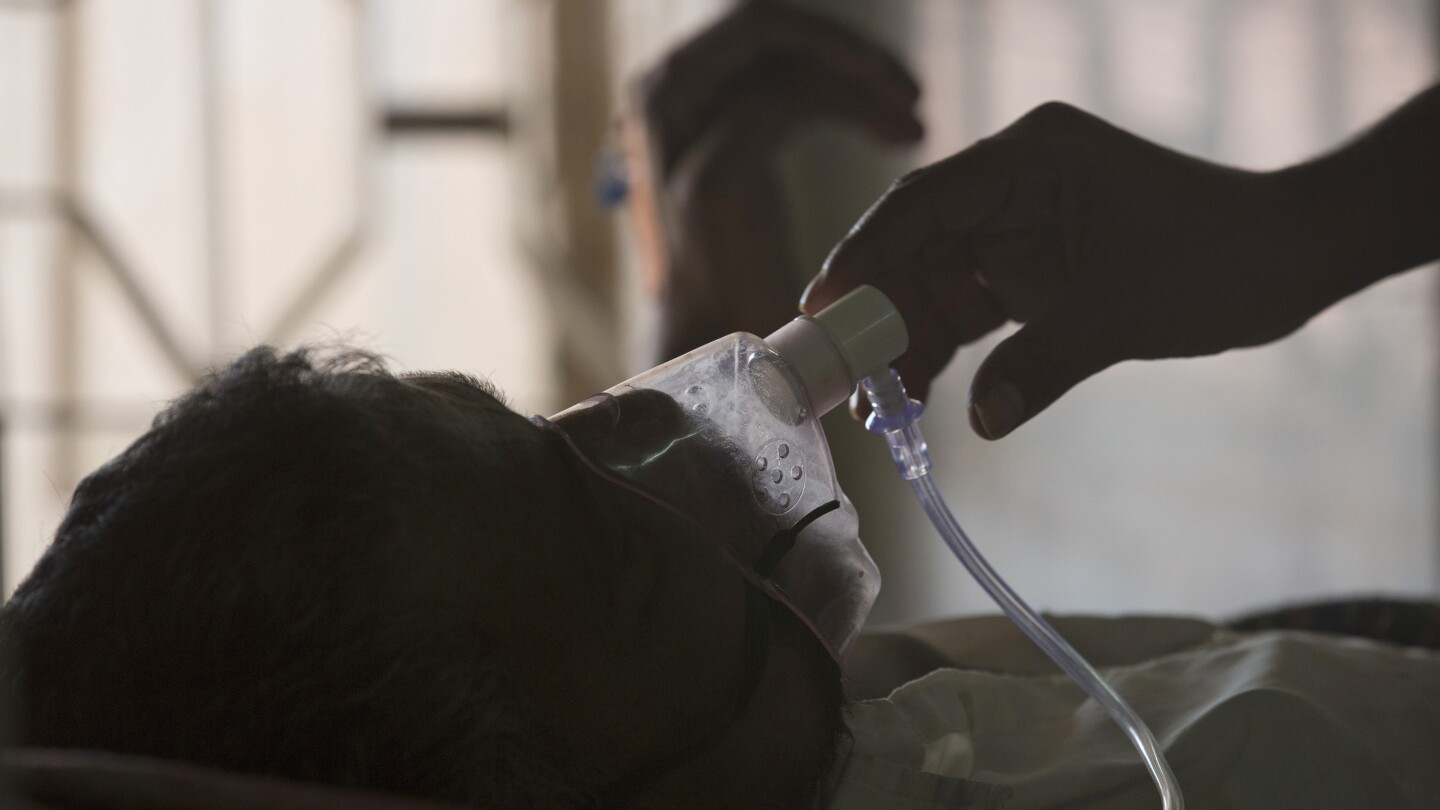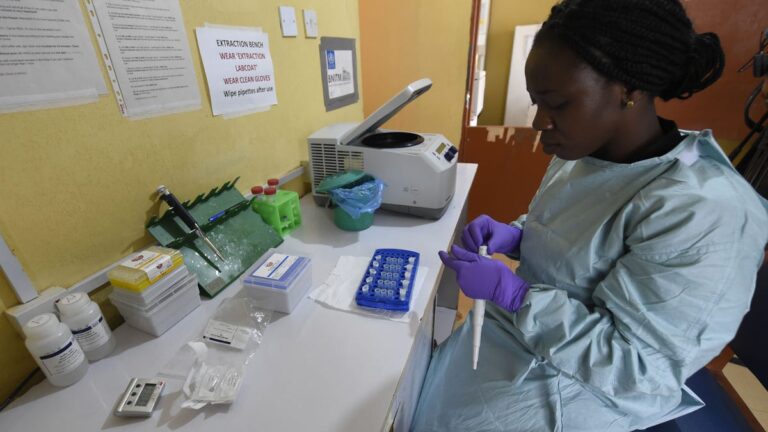Global Tuberculosis Deaths Surge Amid COVID-19 Pandemic Challenges
The Rising Shadows of Tuberculosis: How COVID-19 Intensified the Battle
The first thought that crosses our minds when we hear “tuberculosis” is often, “Isn’t that an old problem?” You might imagine a distant era when this infection plagued societies, but the reality is more complex. This stubborn disease has found a way to resurface, particularly over the last few years. While our focus has been primarily on COVID-19, tuberculosis (TB) has silently claimed more lives than ever before. In this article, we’ll delve into the growing crisis of tuberculosis deaths, particularly during the COVID-19 pandemic, exploring why this is happening and what we can do about it.
Understanding Tuberculosis: The Basics
Before we dive into the heavy stuff, let’s unpack the basics of tuberculosis, often referred to as TB. This infectious disease is caused by the bacterium Mycobacterium tuberculosis, which primarily affects the lungs but can also impact other parts of the body.
How Does TB Spread?
- It spreads through the air when an infected person coughs, sneezes, or talks.
- Just like the flu or COVID-19, breathing in these tiny droplets can put you at risk.
Who’s Most at Risk?
While anyone can contract TB, a few groups are more vulnerable:
- People with compromised immune systems: This includes those with conditions like HIV or diabetes.
- Malnourished individuals: Nutrition plays a key role in our immune response.
- Crowded living conditions: Think prisons or refugee camps where people are in close quarters.
The COVID-19 Effect: Unraveling Progress
The pandemic has changed everything we knew about healthcare systems and disease management. While we have been battling a new virus, TB has taken a back seat, and the consequences are alarming.
Declines in Screening and Treatment
During the height of the pandemic, many health services were redirected to manage COVID-19. This shift has led to:
- Reduced Case Detection: Health facilities were overwhelmed, leading to fewer people getting screened for TB. Consider it like trying to call for help when all lines are busy.
- Disrupted Treatment Plans: For those already on treatment, interruptions in medication and follow-ups became common. Imagine being on a rollercoaster that suddenly stops midway – that’s how many TB patients felt about their care.
Stigmatization and Fear
Let’s be real, stigma doesn’t just disappear. During COVID-19, fear of being associated with an infectious disease led many to avoid seeking care for TB. Think about how many of us avoided going to crowded places during the pandemic. It’s only natural to feel apprehensive when it comes to an illness most people associate with serious contagion.
The Result?
Reports indicate a staggering surge in global TB deaths; the World Health Organization (WHO) estimates that, in 2021 alone, millions of new cases were missed, resulting in thousands of unnecessary deaths. The figures speak volumes—what was once a declining trend for tuberculosis has turned into a sharp incline.
The Numbers Don’t Lie: TB Deaths Are Soaring
Let’s break down some of the statistics that seem to jump off the page:
- In 2020, TB caused about 1.5 million deaths globally.
- By 2021, that number surged, as healthcare systems struggled to cope.
- Countries like India and those in sub-Saharan Africa report particularly high rates.
The Impact of Social Determinants
Add to this deadly cocktail the existing social determinants of health—economic disparity, lack of access to healthcare, and education. These factors create a fertile ground where diseases like TB can thrive, exacerbating the crisis.
Why Aren’t We Paying Enough Attention?
Amid the noise of COVID-19, TB has paled in comparison. A disease that has claimed lives over decades is being overshadowed. This ongoing battle calls for just as much attention and urgency.
Take Action: What Can We Do?
Now that we’ve painted a grim picture, let’s lighten it up with some practical steps we can take, both individually and collectively.
Boost Awareness
- Educate Yourself and Others: Knowledge is power. Understanding symptoms and risks can help reduce stigma and encourage more people to seek testing.
- Community Engagement: Connect with local health organizations. Participate in awareness campaigns that focus on tuberculosis.
Advocate for Policy Changes
Remember the saying, “You can’t just sit around and complain”? Well, getting involved with advocacy groups pushing for better TB-focused health policies can drive change.
Support Healthcare Initiatives
If you have the means, consider supporting charities and organizations that focus on TB research and treatment. Every little bit helps in providing resources for the detection and treatment of this disease.
A Call to Action
The data on how COVID-19 has derailed progress against tuberculosis is alarming. But if we harness our collective power for awareness and advocacy, we can turn things around. The fight against TB is far from over, and the spotlight needs to return to this formidable foe.
Conclusion
In conclusion, the rise in tuberculosis deaths during the COVID-19 pandemic underscores a dramatic wake-up call for global health systems and communities. TB, often regarded as a relic of the past, has asserted itself as a modern threat. But every crisis brings with it an opportunity for change. By amplifying voices, advocating for policy improvements, and investing in awareness and treatment programs, we can make strides to reduce the scourge of TB. As the pandemic has shown, health is interconnected. Let’s not allow the gains made over the years in combating TB to dissolve in the shadows of a new virus. Let’s shine a light on tuberculosis and work toward a healthier, TB-free world.
FAQs
1. What are the main symptoms of tuberculosis?
Patients often experience a persistent cough, fever, night sweats, and weight loss. If you experience these symptoms, seeking medical advice is crucial.
2. How is tuberculosis diagnosed?
TB is typically diagnosed through a combination of skin tests, blood tests, and chest X-rays.
3. Can tuberculosis be prevented?
Yes, preventive measures include vaccinations like the BCG vaccine and taking precautions in crowded living conditions.
4. What is the treatment for tuberculosis?
TB is treated with a regimen of antibiotics that usually lasts six months, but adherence to this treatment is critical for effectiveness.
5. Why is there a stigma around tuberculosis?
Stigma often stems from misconceptions about the disease being highly contagious, leading to fears of transmission and associated discrimination. Spreading awareness can help combat this stigma.







